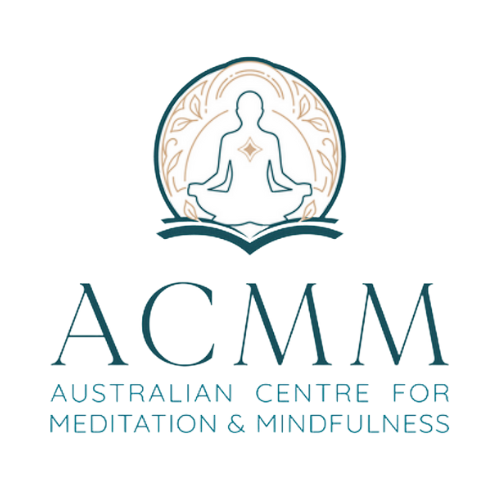A lunchtime meditation and mindfulness session can help us get over that mid-day work slump, reduce stress, calm, clear the mind, relax, and improve concentration. If you are considering facilitating a lunch time meditation session, do it! Here are some tips to help you create the best sessions possible, from ACMM coach Jen Hill, owner of Right Brain Liaisons.
Prepare the Lunch Time Meditation and Mindfulness Sessions
In preparing the sessions, the most important consideration is your audience. Some points to consider might include:
- Who will attend?
- What day and time will suit attendees best and how frequently will you offer the sessions?
- What are attendees’ objectives for attending and expectations of the sessions?
- What level of meditation experience do they have?
- How will you structure the sessions and what techniques will you use?
- Will you offer the sessions for free, by donation or for a fee paid for by the attendees or their employer, if in a workplace context?
Survey potential attendees
The best way to answer these questions and provide a valuable offering for attendees is to ask them. Create a short online, hard-copy or verbal survey to seek feedback on interest and delivery and regular feedback to measure outcomes and adjust your offering accordingly. Your best guide are your attendees, so see what works and meet people where they are at.
Based on interest, you might consider an overarching theme or broad intention for the sessions, such as to reduce stress or mental busy-ness, to increase focus or calm, or to reset or recharge. Use appropriate techniques and a brief introductory explanation, story, quote, or saying to engage the group’s attention and provide a focus for a deeper experience.
In general, lunchtime sessions often work well as casual, drop-in, stand-alone sessions to accommodate irregular attendance. The sessions should be designed to help people relax and reduce stress. Keep sessions simple, using techniques that promote relaxation of body and mind and are suitable for beginners. Use workplace-appropriate, trauma-sensitive, and inclusive language, and consider keeping sessions to 30 minutes to also allow attendees time to eat lunch, get some fresh air or take a mindful walk during their lunch break.
As group meditations can also often be a great team-building and bonding activity, you might allow time for group chat before the meditation (also allowing time for late comers to arrive), guide a 20-minute meditation and allow time for group discussion and reawakening to full alertness afterwards before attendees return to their day.
Prepare the Space
Ensure the space is conducive to group meditation, relaxation, and a pleasant experience. Book a private and relatively quiet room with enough comfortable chairs that will be free of interruptions or loud noise (such as a boardroom, meeting room or other suitable space). Arrive early to set up the room in a welcoming way, with cushions or blankets if required, test speakers (if using music), know how to operate the lights if turning down, and place a sign on the outside of the door to prevent people interrupting the session. It might say something like “Lunch Time Meditation and Mindfulness session in progress. Please do not enter and keep noise to a minimum. Thank you”. Before you start the meditation, close the door so late comers know not to enter.
Using calming, ambient music without lyrics can help to promote relaxation by giving wandering minds something to focus on and thus slowing racing thoughts, while also masking noises and taking the pressure off yourself to fill silences.
If you hold sessions outside, a local park or walking meditation can also be a great way for people to relax, de-stress and recharge during the working day. Classes can also be run online, if need be, for no or low cost to you.
Wherever you hold your sessions, your role will be as much about creating a safe, supportive, welcoming, and friendly (psychological) space in which your participants can relax and unwind as anything else. You may like to consider booking the physical space for longer than 30 minutes to allow time for those who wish to take their time and enjoy the many benefits of group meditation before continuing with their day.
Prepare the Audience
Preparing the audience is important to ensure everyone is on the same page and aligned with the overarching intention for the sessions (if there is one). Remind attendees of the purpose of the sessions and any guidelines for participation, such as honouring the space as safe, inclusive, free of judgement, full of respect, discretion, and care for self and each other.
Remind people to switch off or mute their devices before arriving, ask them to bring their own water and reassure them that regular attire is fine, and they will be seated on chairs for comfort.
Ask people to RSVP (if required), to arrive on time and let them know your policy for late comers (e.g., no entry for late comers). Consider creating an electronic calendar invite and send reminders before sessions to remind people to make time to attend.
Once ready to start, take time to ensure that everyone is comfortable and invite attendees to adjust their chair and posture for comfort as needed. Check chair ergonomics and heights are suitable. Check ambient temperature is comfortable (e.g., turn A/C on or off), check if any noises can be minimised and adjust the lighting as necessary to help people relax. Remind participants that this time is for their self-care. It may be the only time they take for themselves, which, if nothing else, may be of great value.
Prepare Yourself
Prepare yourself by grounding, centring, and calming yourself, sit comfortably in a confident, upright position, and remind yourself of your reason for facilitating these lunch time meditation and mindfulness sessions. Feeling nervous before leading a group, especially early on, is completely normal. With practice, as you build confidence, these nerves should gradually subside, but in the meantime, embrace nerves as a positive sign that you are doing something significant and meaningful to you, and let them provide you with the energy you need to lead. Breathe deeply and stay as present as you can. Use a timer and resist the urge to rush; nerves may cause you to speak and guide faster than normal.
In dealing with nerves, it may also help to remind yourself that the sessions are not about you, they are for participants to relax, soothe their busy mind and take time out for their health and wellbeing. Bringing notes or a script can also ease nerves if you worry about getting lost, while it can also take pressure off yourself to remember that the real value of these sessions is in the connection participants have with themselves in the spaces between your words, rather than in any words you may or may not say.
Things don’t always go as planned
Try not to take it personally or as criticism if attendance is low or inconsistent. People are busy and don’t always recognise that stopping to pause, breathe deeply and relax, especially in the middle of a busy day, will help their focus and productivity, let alone their wellbeing. People often forget or feel they can’t afford the time to attend. If unsure, ask for feedback, be patient and persevere.
Finally, people often want to start running a meditation group but feel they are not ready. Don’t listen to this voice! In truth, you will most likely not feel ready until you start. The only way is to be brave, make a start and learn as you go, learning about what people want, what works well and how best to deliver it.
You can do it! Keep it simple, seek feedback and be willing to adjust as you go. Learning as you go is the best way to develop and polish your offering.
We provide a range of post graduate training options and support. Certificate, Diploma and Masters courses in Meditation and Mindfulness Teaching. An optional addition to any course is our Community Work Placement Program. It supports new meditation teachers to begin or expand their teaching practice. Download a prospectus for all the details or book a discovery call with us here to find out more!








